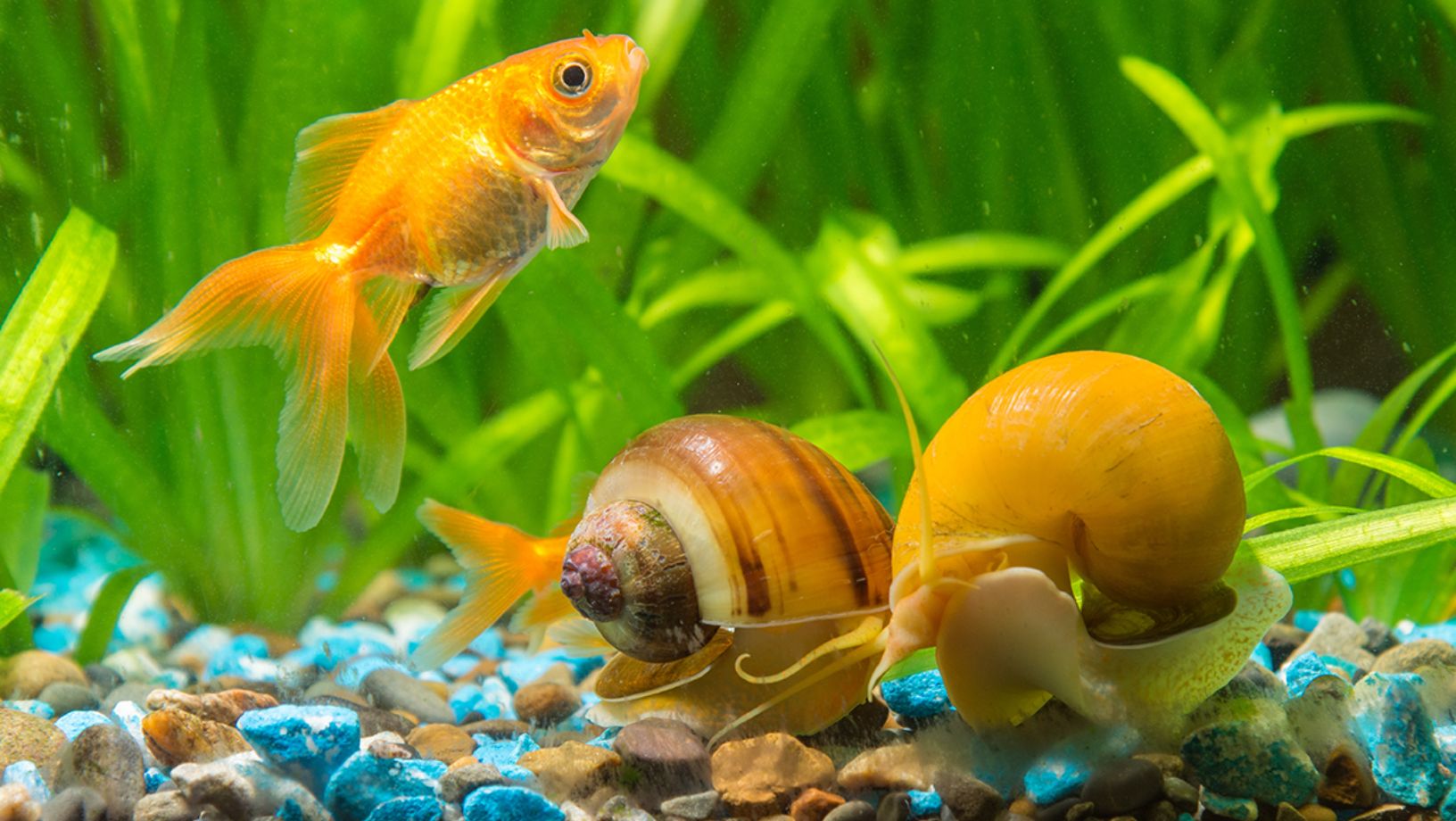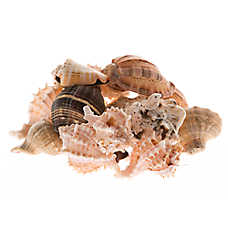A Set-up Guide for Your New Pet Snail, Shrimp or Crab

In this Article
5 things to know about your snail, shrimp or crab
- Literally spineless, they're all "aquatic invertebrates"
- They can live about 2 to 5 years
- They grow between 1 to 3 inches (3-8 cm) long, depending on the species
- They sometimes can share a tank with tropical fish
- Shrimp and crabs shed their skin in order to grow
How do I set up my aquatic invertebrate's home?
Set up the aquarium at least 1 day before you add any shrimp, crabs or snails.
Aquarium and stand
- The minimum size of your aquarium depends on how many invertebrates and fish you have and how big they will be as adults. A rule of thumb: The aquarium should have 1 gallon of water for every inch of fully-grown shrimp, crab or snail, plus any fish.
- The aquarium should be near a power source in a low-traffic area, away from direct sunlight and drafts.
- Water weighs 8 pounds per gallon. Pick a very sturdy, stable base for your aquarium, then fill the tank with water.
What should I put in my crustacean's tank?
- If you will be using an under-gravel filter, add it first.
- Layer about 2-3 (5-8 cm) inches of gravel on the bottom of the tank. That works out to 1½ pounds of gravel per gallon of water. Rinse the gravel before putting it in the aquarium.
- Fill the tank about halfway up with dechlorinated water.
- Add the thermometer and other necessary equipment.
- Time to decorate! Add plants, rocks and décor. Rinse all items before adding it to the tank.
- Finish by filling the tank the rest of the way with water.
Filtration
- Follow the manufacturer's instructions for choosing and setting up the filter.
- An aquarium filter should be able to process all of the water in the tank three to five times an hour. (For example, the filter in a 20-gallon tank would need to push through at least 60 gallons of water each hour.)
Heat and lights
- Check the temperature your shrimp, snails or crabs will need before you bring them home. Depending on the species, they'll prefer water somewhere between 68 and 82 degrees Fahrenheit (20-28 Celsius).
- Choose an aquarium heater with 5 watts of power for each gallon of water in the aquarium. A large aquarium may need a heater at either end.
- Wait 15 minutes after filling the tank before turning on the heater.
- Place the heater close enough to the filter to distribute the warmed water.
- Run the tank's filter and the tank's hood light for 24 hours, then check the water temperature and adjust the heater if necessary.
How do I add snails, shrimp or crabs to my aquarium?
- Many species of aquatic invertebrates are peaceful and can live alongside tropical fish. But be sure the fish and the invertebrates are similarly sized.
- Ghost shrimp can live with small fish in a community aquarium but could be eaten by larger fish.
What do snails, shrimps and crabs eat?
- Most aquatic invertebrates are scavengers and will eat unwanted algae and leftover fish food that falls to the bottom of the aquarium.
- To be sure they have enough to eat, supplement that diet with sinking pellets and algae wafers.
How can I keep my snail, shrimp or crab healthy?
If your invertebrates display any of these symptoms of illness or distress, talk to a PetSmart store associate or a veterinarian familiar with aquatic animals:
- Swollen joints
- Decreased appetite or activity
- Excessive shedding of the skin
- Inflamed or discolored skin or shell
Water quality testing
PetSmart offers free aquarium water testing. Bring in a sample and we can test its quality within minutes.
PET SAFETY TIPS
- Fish and aquatic animals can transmit disease to humans. Wash your hands with soap and water before and after interacting with your aquarium. Children, pregnant women, elderly people and people with immune-system problems should take extra care.
- Keep fish away from food and areas where food is prepared.
- Never release fish into the wild. They won't adapt well and can damage natural habitats.
- Thoroughly wash your hands with warm, soapy water before and after contact with any pet or its habitat.
- Adults should assist children with hand washing after contact with a pet, its habitat or aquarium water.
- Do not use soaps or detergents to clean aquarium or décor, since they are toxic to aquatic animal.
VET ASSURED™
Pets purchased at PetSmart are part of our exclusive Vet Assured™ program, designed by PetSmart veterinarians to help improve the health and well being of our pets.
Our vendors meet a high standard in caring for pets and screening them for common illnesses. This program also includes specific standards for in-store pet care.
PETSMART PROMISE
If your pet becomes ill during the initial 14-day period, or if you're not satisfied for any reason, PetSmart will gladly replace the pet or refund the purchase price.


